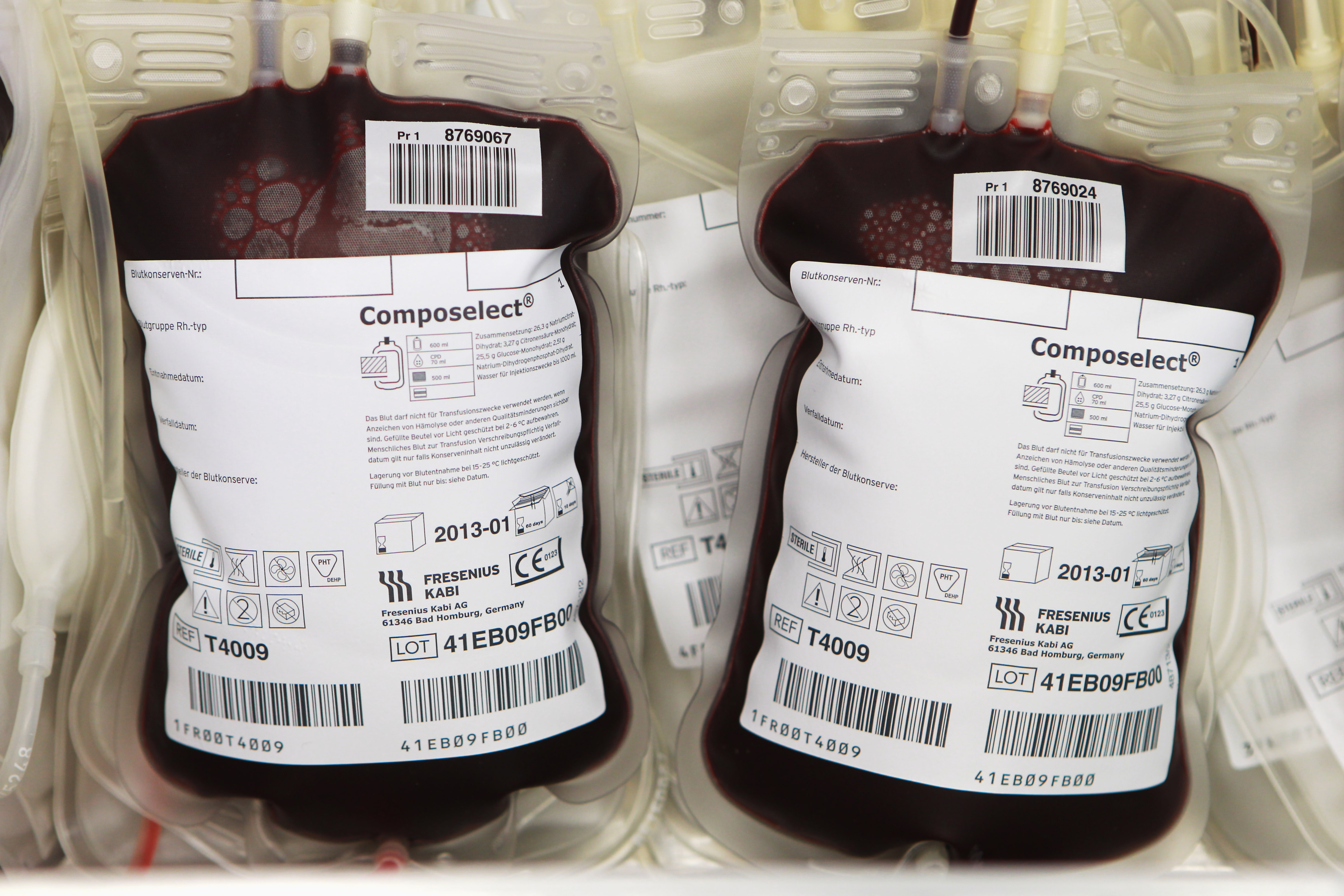Gene therapy could free some people from a lifetime of blood transfusions

A one-time, experimental treatment for an inherited blood disorder has shown dramatic results in a small study. It’s a major milestone for the company that created it, Bluebird Bio, and the latest in a string of successes for gene therapies, which aim to modify a person’s DNA to treat disease.
About 288,000 people worldwide have beta thalassemia, a genetic disorder in which the body does not make enough hemoglobin, the iron-rich, oxygen-carrying protein in red blood cells. But in an international clinical trial of Bluebird’s treatment, 15 out of 22 patients with the disease were able to stop blood transfusions entirely after receiving the therapy. The other seven patients, the majority of whom had the most severe form of the disease, now need transfusions less often.
Doctors followed patients for up to three and a half years, and the treatment didn’t appear to wear off during that time. The results are published today in the New England Journal of Medicine.
All the study participants had been receiving regular blood transfusions every three to four weeks since they were about six months old, says lead author Alexis Thompson, a physician at Lurie Children’s Hospital in Chicago.
A transfusion can take four to six hours, and frequent transfusions can cause iron to build up in the blood, leading to serious side effects. A 2016 study conducted in the UK estimated that the cost of treating a patient with severe beta thalassemia tops $720,000 over 50 years.
The gene therapy involves extracting stem cells from a patient’s bone marrow and modifying them outside the body with a virus that’s been tweaked to carry correct copies of the HBB gene, which makes hemoglobin. Mutations in this gene cause beta thalassemia. The cells are then infused back into the patient’s marrow to begin producing healthy blood cells.
Thompson says the effect on patients has been remarkable. “They have been tied to this ongoing medical therapy that is burdensome and expensive for their whole lives,” she says. “Gene therapy has allowed people to have aspirations and really pursue them.”
In December, the US issued its first approval of a gene therapy to fix an inherited genetic trait. Called Luxturna, it’s meant to restore some eyesight for people with a rare form of genetic vision loss. Two gene therapies for cancer, Kymriah and Yescarta, were also approved last year.
Bluebird, based in Cambridge, Massachusetts, is also developing gene therapies for sickle-cell disease and childhood cerebral adrenoleukodystrophy, also known as Lorenzo’s oil disease, a devastating disorder that affects the nervous system. In 2017, the company reported that a French boy who had received its gene therapy for sickle-cell now has no symptoms of the disease.
David Davidson, chief medical officer at Bluebird, says the company will seek approval for its beta thalassemia therapy in Europe later this year, followed by an application in the US. If it is approved, he says, Bluebird plans to have it offered at several sites throughout the US and Europe.
Deep Dive
Biotechnology and health
How scientists traced a mysterious covid case back to six toilets
When wastewater surveillance turns into a hunt for a single infected individual, the ethics get tricky.
An AI-driven “factory of drugs” claims to have hit a big milestone
Insilico is part of a wave of companies betting on AI as the "next amazing revolution" in biology
The quest to legitimize longevity medicine
Longevity clinics offer a mix of services that largely cater to the wealthy. Now there’s a push to establish their work as a credible medical field.
There is a new most expensive drug in the world. Price tag: $4.25 million
But will the latest gene therapy suffer the curse of the costliest drug?
Stay connected
Get the latest updates from
MIT Technology Review
Discover special offers, top stories, upcoming events, and more.